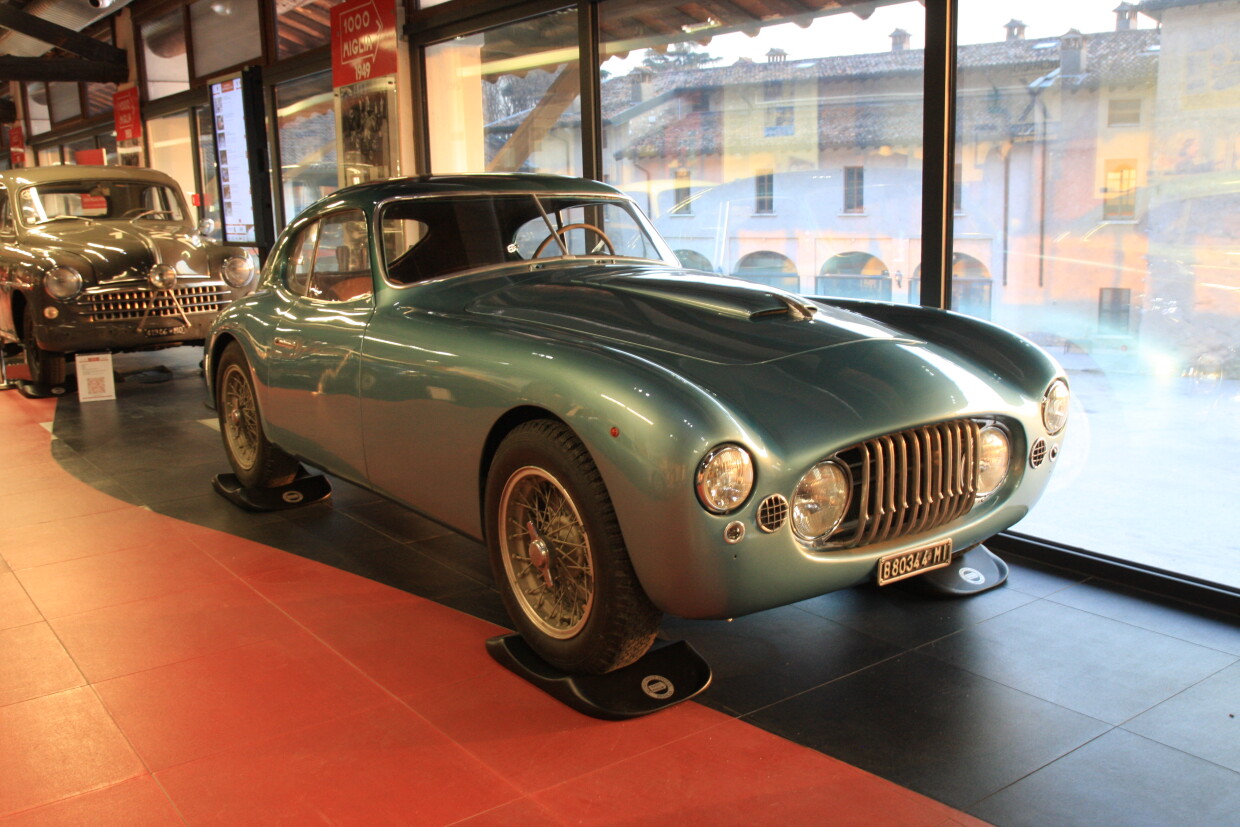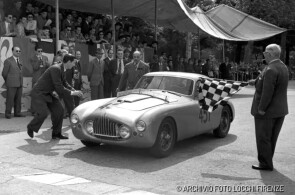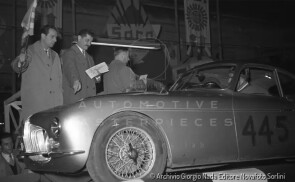
1952 Fiat 8V
ON/OFF
Why am I an Automotive Masterpiece?
L. Limited edition cars
no. 6 manufactured, no. 4 remaining, 4th built
In the postwar period, Fiat was working on an eight-cylinder engine internally known as Tipo 106. The engine was originally designed by Dante Giacosa for a luxury sedan, but that project was stopped. Rudolf Hruska, at the time working at the S.I.A.T.A., was given the task to design a car around the V8 engine. The development took place in absolute secrecy. As not to stress the experimental department of Fiat, production of the chassis was also taken up by S.I.A.T.A. Styled by chief designer Fabio Luigi Rapi, the Fiat 8V or “Otto Vù” was presented to the Italian press in February 1952 and first exhibited the following March at the Geneva Motor Show. The car shapes saw several changes in time: the prototype used an art deco grill extending into the hood which initially characterized the examples of the first series. A second series was made featuring four headlights with some of the later cars having a full-width windscreen. A high-performance coupé, destined to compete in the GT class: the 2-liter 8V model was a departure from the usual Fiat production. It was really welcomed by Italian private drivers, it inspired the tuners and it was, in a word, the car to beat in the 2-liter class, also thanks to the special versions built by Zagato or Siata. The Fiat V8 had a 70° V configuration of 1996 cc of displacement, at 5600 rpm the engine produced 105 hp in standard form with double two-barrel Weber 36 DCS carburetors, giving a top speed of 190 km/h. Some engines were fitted with two huge four-throat Weber 36 IF4/C carburetors offering 120 hp, but the intake manifold was very rare. The Fiat 8V is the only eight-cylinder built by Fiat. The engine was connected to a four speed gearbox. The car had independent suspension all round reworking the Fiat 1100 ones and drum brakes on four wheels. As the body was welded to the chassis it was a semi-unitary construction. Only 114 of these high-performance coupés had been produced, 64 of them with a “Fiat Carrozzerie Speciali” body, 34 first series and 30 second series. It was made available anyway in different body styles, offered by the factory and by various coachbuilders like Zagato, Pinin Farina, Ghia and Vignale. The production ceased in 1954.
Chassis 106.000004 is the fourth car built in a series of six pre-production prototypes with an art deco grill that extended into the hood. A peculiarity: this one, like the other 5 pre-production cars, adopts the oval tube chassis built in Siata and also used on the Siata 208 CS. When Fiat later began series production in 1952, it switched to a chassis built internally at Lingotto, with the same design but with round tubes. Chassis 106.000004 is the fourth of 34 first series 8V and one of only three cars entered in 1952 Mille Miglia by Supremo Montanari from Ravenna, the first owner of the car. He damaged his car during the rainy 1952 Mile Miglia, finishing off street more or less 5 minutes after leaving the ramp. Probably, FIAT was not yet tooled-up to rebuild Montanari's car, so he had to find a coachbuilder. The car was completely rebuild following the original Rapi-lines probably by Motto and used some of the original parts like the art-deco grille and engine hood. Also the inside was changed with different instruments. The car appeared with this new shape at the 1952 Circuito Automobilistico di Senigallia and at the 1953 Mille Miglia in a two tone green paint and with a full-width bug deflector. It finished 23rd overall. It come back to Mille Miglia in 1954 and 1955, when the car showed a modified grille and, just above it, two slender extra air intakes. The car ran several races until 1956 such as the Giro dell’Umbria, Coppa d’Oro delle Dolomiti and the Bologna San Luca.








